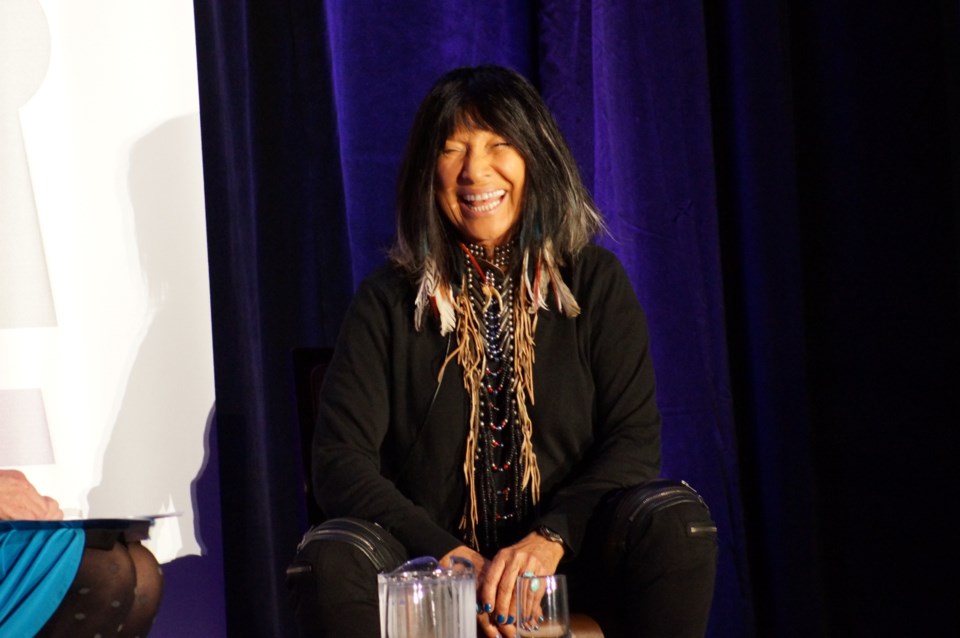Renowned Aboriginal singer-songwriter Buffy Sainte-Marie set foot in Richmond Tuesday to address nearly 1,000 attendees at a non-profit housing conference.
Sainte-Marie spoke to the systemic housing problems Aboriginal people face in Canada and offered up ideas how communities can approach solutions holistically and in a unified manner that involves Aboriginal people.
“Nobody ever gives Aboriginal people credit. You know why? Because people who were writing the textbooks didn’t know. But now we know. It’s an exciting time . . . We have a lot to contribute,” said Sainte-Marie.
The 75-year-old pacifist and social activist weaved light-hearted jokes into her serious message that Aboriginal communities are in need of help. She told the audience that for them to get that help, people need to “de-colonize” their way of thinking by embracing Aboriginal-based ideas.
“I think some of us outside the Indigenous community, they think of us in terms of our National Geographic clothes,” she chuckled.
She drew attention to how past generations have been ignorantly educated on Aboriginal people and their communities, thus leading to a lack of understanding amongst non-Aboriginal people.
History comes as a shock to teacher educators, she said.
“A lot are shocked they’ve spent most of their lives teaching bullshit. It was basically propaganda that comes from the 1400s,” said Sainte-Marie.
But not all is lost, she noted. Sainte-Marie said she sees positive changes in how Canadians are addressing past wrongs, namely in recognizing and learning about Aboriginal culture and practices.
She noted the many unrecognized practices and skills Aboriginals lent to present-day society, such as team sports, surgical and medical practices, art, music and astronomy.
“None of us have received this information in school . . . Don’t feel hesitant to learn because you feel you’re not qualified. We’re all here to learn,” she told attendees of the BC Non-profit Housing Association event, who had gathered at the Sheraton hotel to share ideas on improving the non-profit housing sector.
Housing is a major socio-economic problem for many First Nations across Canada. According to the 2011 National Household Survey, 301,000 homes — or about 21 per cent of all homes — lived in by Aboriginals are in need of major repairs. Nationwide, 2.4 million homes — or about eight per cent of all homes — need such repairs.
Sainte-Marie spoke to the designs of wigwams and teepees — in how they heat and cool effectively, repel water, circulate air, are mobile and much more.
“The teepee is an amazing kind of housing,” she said.
Her point was to show that Aboriginals can and must play a role in housing solutions.
She said new ideas such as using reusable natural materials (in her example, re-processed wood pallets), to build homes is in keeping with sustainable practices of many First Nations.
“It’s a way we can reclaim lumber resources that have been taken off our land, often without consent,” she said.
There are 1.4 million Aboriginal people in Canada. Between 2006 and 2011, the demographic grew by 20 per cent, while Canada’s population grew 5.2 per cent.
Pathways Aboriginal Centre in Richmond pegs the city’s Aboriginal segment at 2.5 per cent of the population.
Aboriginals in Richmond face systemic problems, such as inadequate housing and over-representation in the foster care system.
This year, the federal government announced an additional $416 million for First Nations housing over the next two years.



